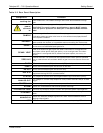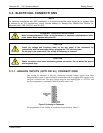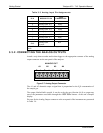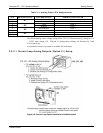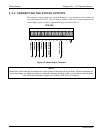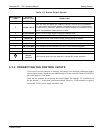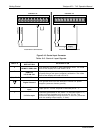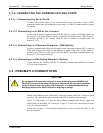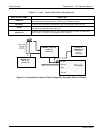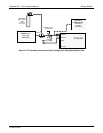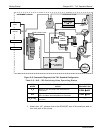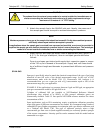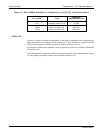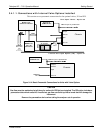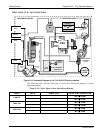
Teledyne API – T101 Operation Manual Getting Started
39
3.3.5. CONNECTING THE COMMUNICATIONS PORTS
3.3.5.1. Connecting the Serial Ports
To utilize either of the analyzer’s two serial interfaces, refer to Sections 4.7 and 5 of this
manual for instructions on configuration and usage. For RS-485 communication, contact
the factory.
3.3.5.2. Connecting to a LAN or the Internet
For network or Internet communication with the analyzer, connect an Ethernet cable from
the analyzer’s rear panel Ethernet interface connector to an Ethernet port. (DHCP setup is
the default, Section 4.7.6.1; manual setup for static IP address is recommended: see
Section 4.7.6.2).
3.3.5.3. Connecting to a Personal Computer (USB Option)
For direct communication between the analyzer and a personal computer (PC), connect a
USB cable between the analyzer and desktop or laptop USB ports. (If this option is
installed, the COM2 port can only be used for RS232 multidrop communication). See
Section 4.7.7 for setup instructions.
3.3.5.4. Connecting to a Multidrop Network (Option)
If your unit has the Teledyne API RS-232 Multidrop Option card installed, see Section
4.7.8 for setup instructions.
3.4. PNEUMATIC CONNECTIONS
CAUTION!
Do not operate this instrument until you’ve removed dust plugs from SAMPLE and
EXHAUST ports on the rear panel. (Plugs were inserted into the rear panel pneumatic
fittings to prevent dust from getting into the analyzer. It is recommended that these
dust plugs be stored for future use such as shipping or storage.
Sample and calibration gases should only come into contact with PTFE (Teflon) or glass
materials. They should not come in contact with FEP or stainless steel materials.
Figure 3-11 and Figure 3-12 show the most common configurations for gas supply and
exhaust lines to the Model
T101 Anal
yzer. Figure 3-14 shows the connections for units
with valve options installed.
Please r
e
fer to Figure 3-4 for pneumatic connections at the rear panel and Table 3-2 for
their descriptions.
07266B DCN6485



